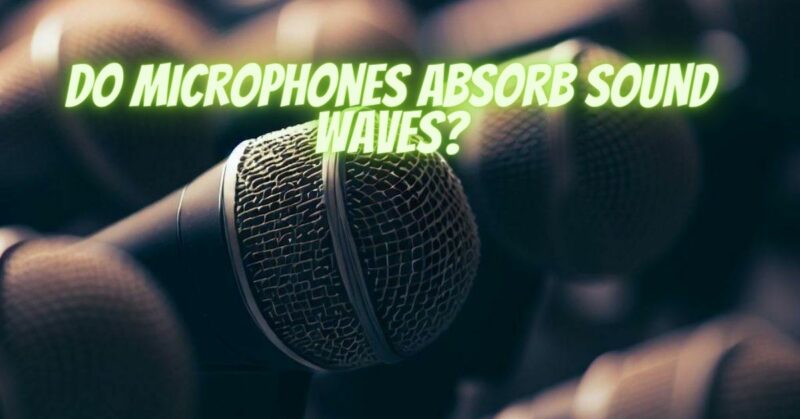Microphones are essential devices used to capture sound and convert it into electrical signals. While they interact with sound waves, it is important to understand that microphones do not absorb sound waves in the same way that materials or surfaces may absorb sound energy. In this article, we will explore how microphones work and clarify their role in sound wave interaction.
- Microphone Function:
Microphones operate on the principle of transduction, where they convert sound waves into electrical signals. They contain various components, such as diaphragms, capsules, or ribbon elements, that respond to sound pressure variations. These components are designed to vibrate in response to sound waves, generating electrical signals that represent the captured sound.
- Sound Wave Interaction:
Rather than absorbing sound waves, microphones interact with them to capture and convert sound into electrical signals. When a sound wave reaches a microphone, it causes the components (e.g., diaphragm) within the microphone to vibrate. These vibrations create corresponding electrical variations that are then amplified and processed to produce an output signal.
- Reflections and Acoustic Environment:
Microphones can be affected by reflections and the acoustic environment in which they are placed. Sound waves can bounce off surfaces and reach the microphone from various angles. These reflections can impact the captured sound, causing phase cancellations or changes in frequency response. However, it is important to note that these effects are related to the interaction of sound waves in the environment, rather than the microphone itself absorbing the sound waves.
- Wind and Pop Filters:
While microphones do not absorb sound waves, they may incorporate accessories or features to reduce unwanted noise caused by air movement or plosive sounds. Windshields or pop filters, for example, are commonly used to minimize the effects of wind or strong bursts of air hitting the microphone. These accessories help prevent distortion or undesirable noise from reaching the microphone’s sensitive components.
Conclusion:
Microphones do not absorb sound waves in the same way that materials or surfaces might. Instead, they interact with sound waves to capture and convert them into electrical signals. The components within the microphone respond to sound pressure variations, generating the corresponding electrical variations that represent the captured sound. While microphones can be influenced by reflections and the acoustic environment, they are designed to respond to sound waves rather than absorb them. Understanding the function of microphones can help in utilizing them effectively and achieving high-quality sound capture.


